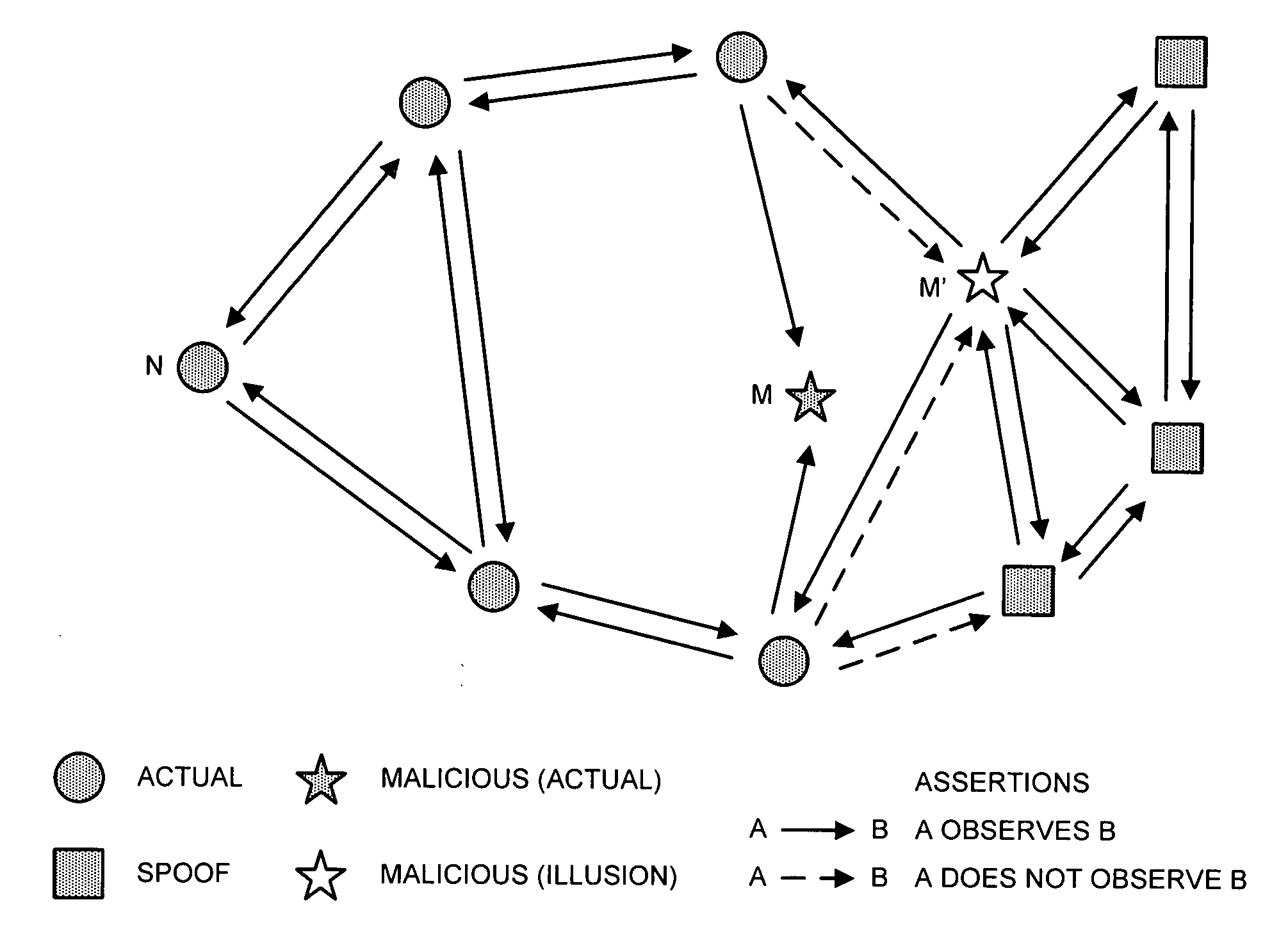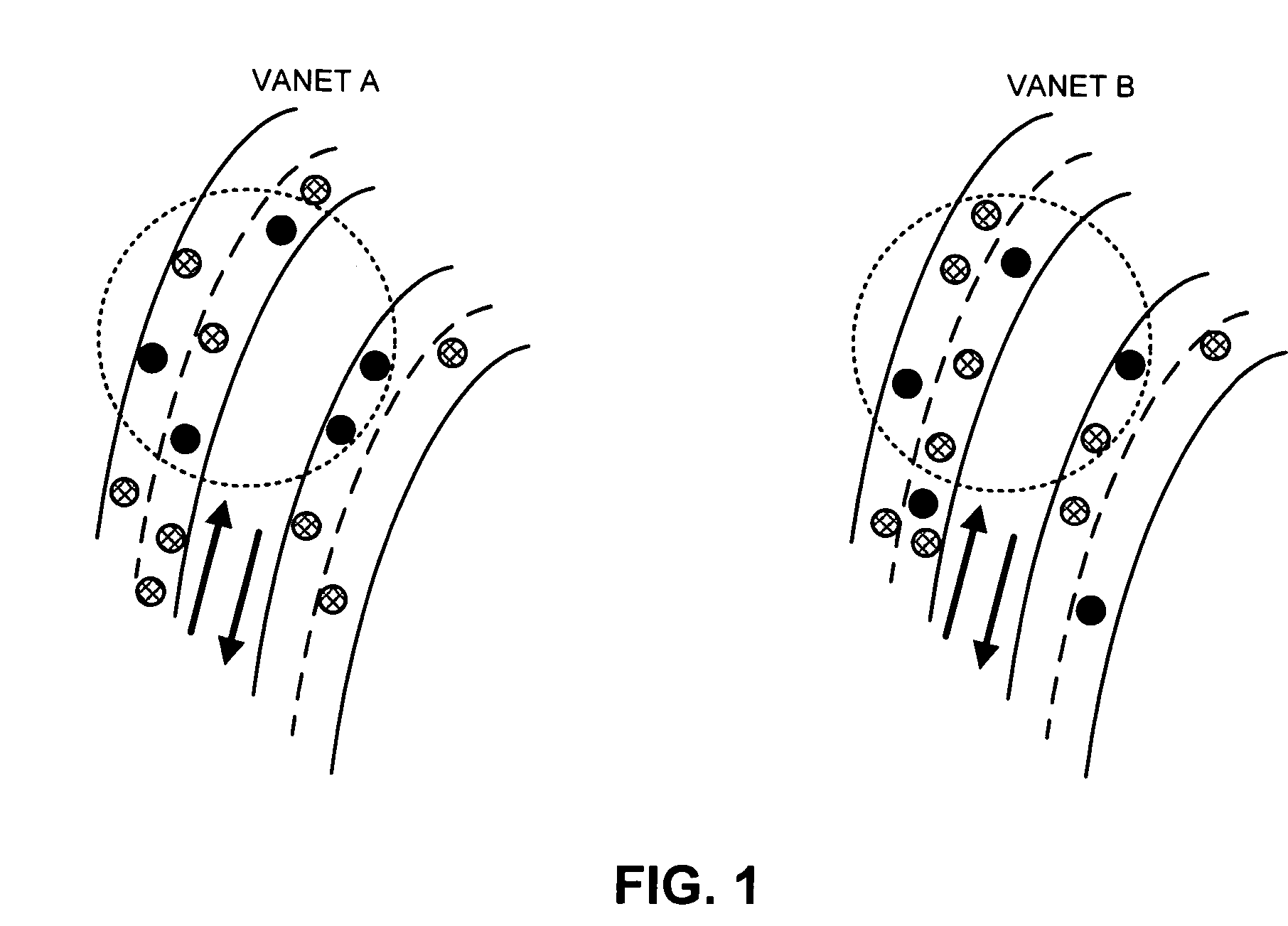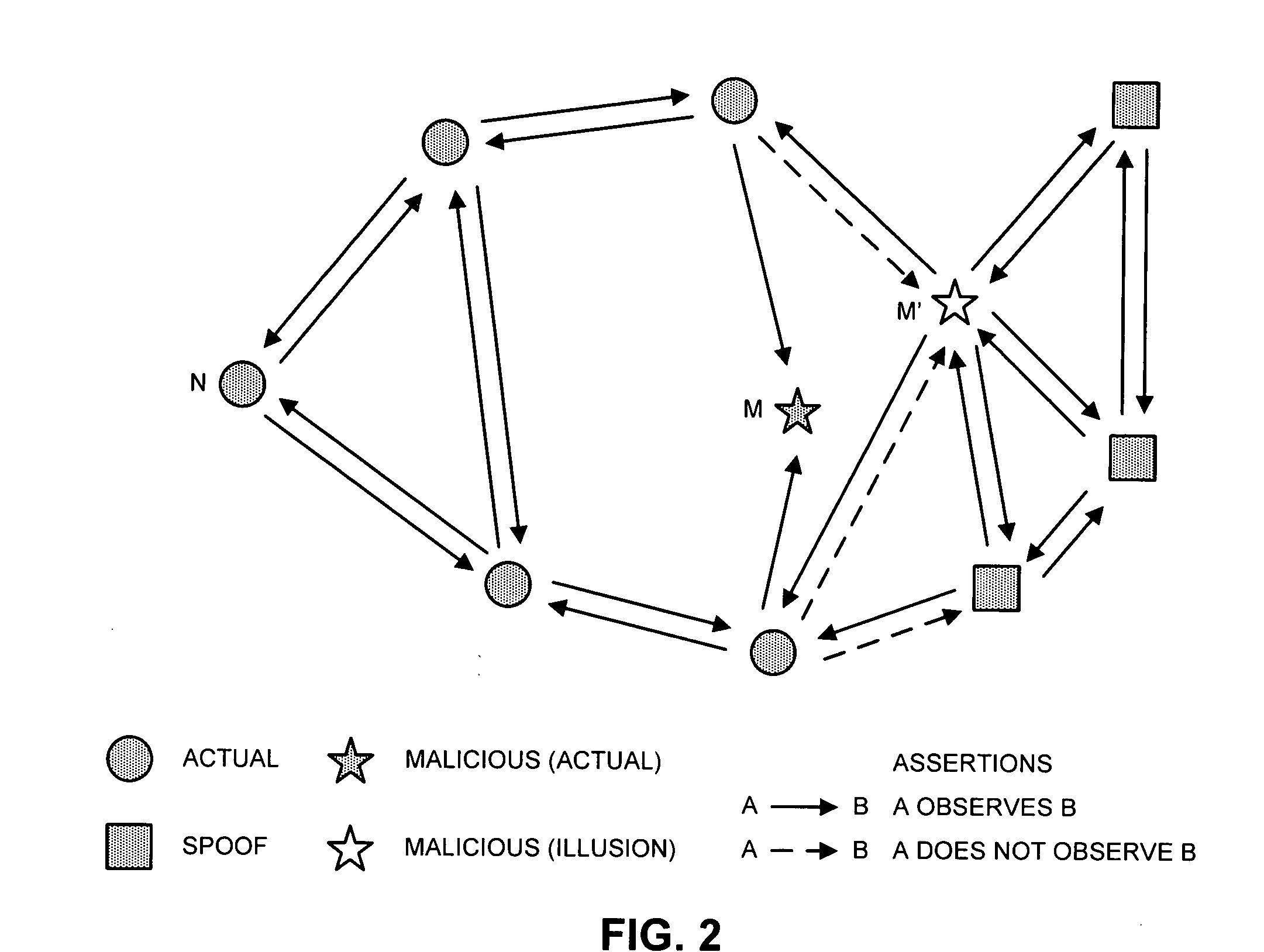Method and apparatus for detecting and correcting malicious data in an ad-hoc network
a malicious data and ad-hoc technology, applied in the field of distributed computer systems, can solve the problems of affecting nearby vehicles, affecting the integrity avoiding corruption of previously honest nodes, so as to facilitate “local distinguishability
- Summary
- Abstract
- Description
- Claims
- Application Information
AI Technical Summary
Benefits of technology
Problems solved by technology
Method used
Image
Examples
examples
[0080] To illustrate this security framework, we consider two examples. The first illustrates how easy it is to detect and reject erroneous nodes if the collaborating sensor data is strong, while the second example illustrates the importance of distinguishability when the vehicles have weaker location sensor capabilities.
[0081] Observing Precise Location of Nearby Vehicles
[0082] For this first example, we assume that nodes are able to sense the precise location of all neighbors with which they can communicate, and that location sensing is bound with communication, so that a node's sensed location can be associated with its public key. The database K consists of tuples:
K={N1,{right arrow over (x)}1O1,N2,{right arrow over (x)}2O2,N3,{right arrow over (x)}3O3, . . . }, (1)
where the assertion Ai=Ni,{right arrow over (x)}iOi can be interpreted as “node Oi claims to have observed node Ni at location {right arrow over (x)}i.” Under normal operation, node Oi will not be able to observ...
PUM
 Login to View More
Login to View More Abstract
Description
Claims
Application Information
 Login to View More
Login to View More - R&D
- Intellectual Property
- Life Sciences
- Materials
- Tech Scout
- Unparalleled Data Quality
- Higher Quality Content
- 60% Fewer Hallucinations
Browse by: Latest US Patents, China's latest patents, Technical Efficacy Thesaurus, Application Domain, Technology Topic, Popular Technical Reports.
© 2025 PatSnap. All rights reserved.Legal|Privacy policy|Modern Slavery Act Transparency Statement|Sitemap|About US| Contact US: help@patsnap.com



